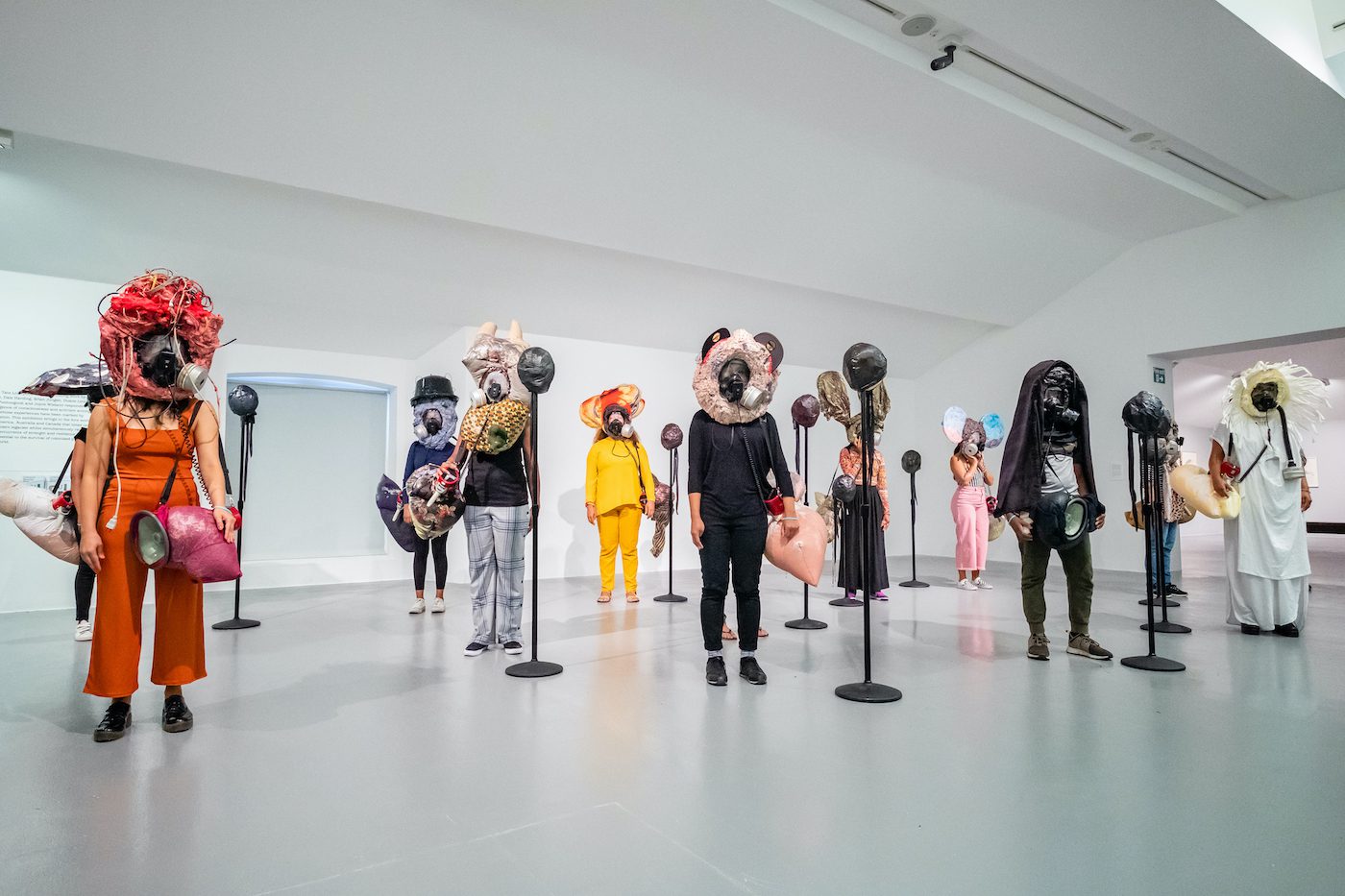Kevin Beasley, Deana Lawson, and Elias Sime are among the six artists who have been short-listed for the Hugo Boss Prize 2020.

Kevin Beasley, Your face is / is not enough, 2016. Performance view: Liverpool Biennial, July 14, 2018 © Kevin Beasley. Photo: Pete Carr, courtesy Casey Kaplan, New York
The short list is selected by a panel of international curators and critics in recognition of artists whose work is transforming the field. Since its inception in 1996, the Hugo Boss Prize recognizes the achievements of both emerging and established artists, and sets no restrictions in terms of age, gender, nationality, or medium.
The winner, who will receive a $100,000 honorarium, will be announced in the fall of 2020 and will present a solo exhibition at the Solomon R. Guggenheim Museum in spring 2021.
The following artists are finalists for the Hugo Boss Prize 2020:
Nairy Baghramian (b. 1971, Isfahan, Iran)
Kevin Beasley (b. 1985, Lynchburg, Va.)
Deana Lawson (b. 1979, Rochester, N.Y.)
Elias Sime (b. 1968, Addis Ababa, Ethiopia)
Cecilia Vicuña (b. 1948, Santiago, Chile)
Adrián Villar Rojas (b. 1980, Rosario, Argentina)
Nancy Spector, Artistic Director and Jennifer and David Stockman Chief Curator, Solomon R. Guggenheim Museum and Foundation, and jury chair said “After a rigorous examination of today’s artistic landscape, the jury identified a group of artists whose practices are beacons of cultural impact. While diverse in their approaches and themes, they each exemplify the spirit of experimentation and innovation that the prize has always championed.”
Nairy Baghramian (b. 1971, Isfahan, Iran) lives and works in Berlin. In an oeuvre that probes the boundaries between the decorative, the utilitarian, and the art object, Baghramian has illuminated new possibilities for sculpture. The artist’s disarming biomorphic forms, made with a range of materials including steel, silicon, resin, and leather, elicit various unexpected art-historical and sociopolitical references, reimagining the workings of the body, gender, and public and private space.
Kevin Beasley (b. 1985, Lynchburg, Va.) lives and works in New York. Working at the intersection of sculpture, installation, and performance, Beasley constructs revelatory formal and sonic experiences. In works that embed found objects in substances such as resin, foam, and tar, or incorporate unconventionally manipulated audio equipment, he amplifies the cultural resonances of his materials to excavate personal and shared histories of class, race, and institutional power.
Deana Lawson (b. 1979, Rochester, N.Y.) lives and works in New York. Her large-format photographs channel vernacular, art-historical, and documentary traditions within the medium, in compositions that valorize black diasporic culture. Picturing individuals she encounters over the course of her everyday life within carefully staged domestic settings, Lawson choreographs every nuance of scenery, lighting, and pose to create tableaux that powerfully evoke the agency of her subjects.
Elias Sime (b. 1968, Addis Ababa, Ethiopia) lives and works in Addis Ababa. Forged from salvaged e- waste, organic matter, and objects sourced from local markets, the artist’s absorbing collages and assemblages explore the relationship between society, nature, and technology. Sime’s repurposing of materials aligns with his long-standing practice of community engagement, in which he asserts the potential for human connection and ecological renewal.
Cecilia Vicuña (b. 1948, Santiago, Chile) lives and works in New York and Santiago. Vicuña’s multivalent practice as an artist, poet, filmmaker, and activist spans five decades. Weaving together form, language, and ritual, her diverse body of what she terms arte precario (“precarious art”) elucidates obscured histories in Latin American culture as well as her personal experiences of displacement, tracing a return to the body and the earth, and to indigenous ways of being.
Adrián Villar Rojas (b. 1980, Rosario, Argentina) lives and works in Rosario and New York. The artist’s densely imagined, context-specific installations and environments negotiate new paradigms for the institutional presentation of works of art. Constructed from organic and synthetic substances that evolve or decay over the course of their exhibition, Rojas’s entropic forms summon a mutable world untethered from humanity’s past, present, and future.
More Editorial